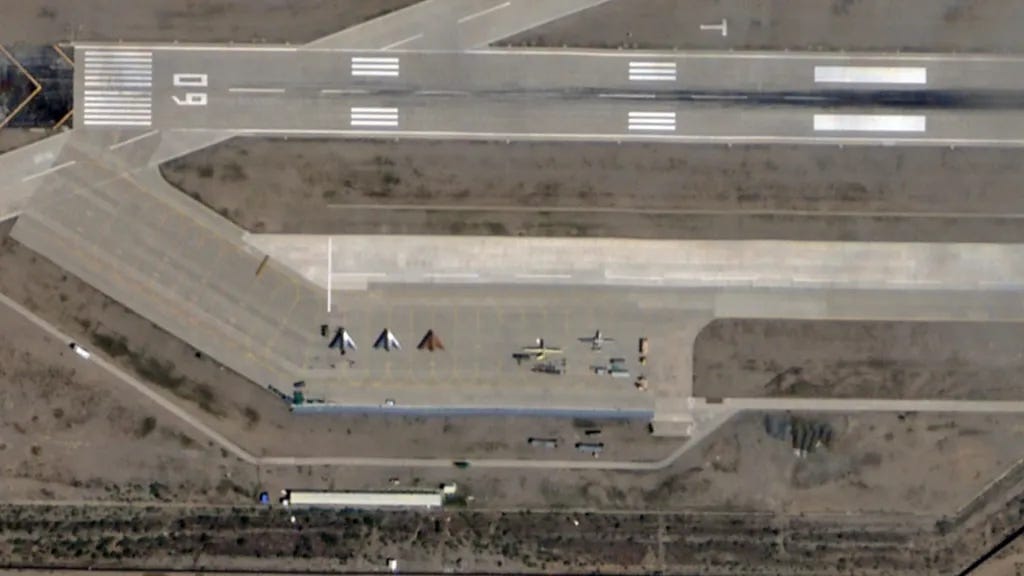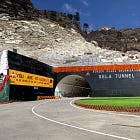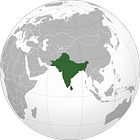Presence Of GJ-11 Armed Flying Wing Uncrewed Aircraft At Airbase In Tibet Highlights Fast-Evolving China-India Military Balance
🇨🇳 🇮🇳 News Analysis
News analysis-themed posts typically focus on recent developments. These posts will tend to be much shorter and less detailed than analysis-themed posts.
Satellite imagery recently released in a The War Zone article and captured by Planet satellites reveals the presence of three apparent GJ-11 armed uncrewed aircraft at Shigatse airport, which is a dual-use civil-military airport located in the Tibetan Plateau.

The presence of apparent GJ-11 armed uncrewed aircraft, which are of a flying wing design and likely have a maximum take-off weight (MTOW) of at least 10,000 kilograms, at Shigatse airbase, as opposed to the likes of Canzhou, Dingxin, and Malan airbases, which are home to major People’s Liberation Army Air Force (PLAAF) testing facilities, suggests that the GJ-11 is undergoing high altitude trials to ascertain its suitability for operations over the Tibetan Plateau and across the Himalyas. High altitude operations constrain the performance of all aircraft, even when extremely long runways, such as Shigatse’s approximately 5000-meter-long runway, are available. The GJ-11 is not the first Chinese large uncrewed aircaft design to undertake high altitude test flights at Shigatse, and is unlikely to be the last.
The operational status of the GJ-11 is uncertain as of this writing, as is the question of how the PLAAF intends to deploy this and other large, high MTOW armed uncrewed aircraft designs. It remains to be seen whether the PLAAF will establish standalone GJ-11 units—perhaps independent brigades—or instead allocate some number of GJ-11 aircraft to PLAAF brigades that primarily operate crewed combat aircraft. These are particularly important questions concerning the deployment of GJ-11 uncrewed aircraft to Shigatse given how the PLAAF does not currently permanently base combat aircraft in the Tibetan Plateau—sub-units of PLAAF regiments/brigades are instead deployed to Shigatse airport/airbase and Lhasa Gonggar airport/airbase on a rotational basis.
Whether or not the PLAAF deploys operational GJ-11 airframes to the Tibetan Plateau on either a permanent or rotational basis, observers interested in the implications of such large and high MTOW armed Chinese combat aircraft designs—the GJ-11 is not the only such design that is flying or at least under development in China—should be mindful of the following:
The GJ-11, which is likely restricted to undertaking air-to-ground missions, may be assigned to the PLAAF bomber force. This may affect how the PLAAF—a military organization that is not known for its flexibility—goes about deploying the GJ-11 around China, particularly in Western Theater Command (WTC).
Whether or not the GJ-11 is deployed at Shigatse and/or Lhasa/Gonggar on either a permanent or rotational basis, it may also be deployed at more distant airbases within reach of targets in the Himalayas. These include the likes of Hotan airbase in Xinjiang—as well as more distant Kashi/Kashgar—and Golmud in Qinghai province.
Whether or not the GJ-11 is deployed at Shigatse and/or Lhasa/Gonggar on either a permanent or rotational basis, it may also be deployed to PLAAF airbases in China’s Sichuan and Yunnan provinces so as to attack targets in India’s northeast—and perhaps targets along India’s eastern coastline, particularly if the GJ-11 can launch long-range standoff munitions—from a different and more difficult to defend direction.
It is important to view the GJ-11 as just one manifestation of the fast-expanding strike munition threat to India’s border infrastructure in the Himalayan region.
The existence of three GJ-11 airframes at Shigatse airbase is also a manifestation of the externalities encountered by India of intensifying military-technological competition between China and the United States. As things stand, the PLAAF is on a modernization trajectory that may result in a transformed China-India military balance in the 2030s.



